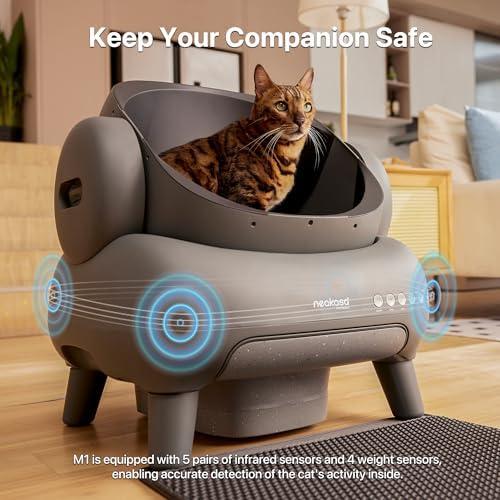Home Pet Paradise, Simple DIY
Home Pet Paradise, Simple DIY — easy projects to make your home safer, save money, and give your pet more playtime. This guide covers small-space fixes, upcycled accessories, quick wins, comfy DIY furniture, a step-by-step pet bed tutorial, and a tiny indoor playground. You’ll get tips on style, safety, tools, and how to pick the right project for your pet. Build your paradise and share your results.
Key takeaway
- Use old blankets to make a cozy bed
- Add a shelf so your cat can climb
- Turn safe items into toys your pet loves
- Create hiding spots for privacy and calm
- Pick washable fabrics to keep things clean

Summary
Why this matters: Home Pet Paradise, Simple DIY
Creating a Home Pet Paradise, Simple DIY setup isn’t just a weekend craft — it makes your pet feel safe, loved, and comfortable. Pets with spaces tailored to them are calmer, play more, sleep better, and bond faster. DIY lets you control materials, size, and style so the result fits your home and your pet’s needs.
This article gives practical, no-fuss steps and examples you can start today — no fancy tools required. Ready to make your home a pet-friendly haven?


Reason 1: Make your home safer for pets (home pet paradise DIY)
Safety first. DIY lets you avoid toxic finishes, tiny choking parts, and unstable designs.
Common household fixes:
- Secure cords with fabric covers or cord boxes.
- Design chew zones: wooden posts or durable DIY toys.
- Escape-proof windows/balconies with tension screens or nets.
- Block gaps under appliances with wedges or foam.
Quick checklist:
- Use pet-safe finishes (water-based, low-VOC)
- Avoid small detachable bits
- Check weight limits on shelves and perches
- Keep meds and cleaning supplies out of reach — pair that habit with a review of first-aid essentials for homes
Short fix: wrap a metal cable in old fabric or a pipe sleeve and tack it behind furniture — chew hazard solved.
For lifesaving precautions and broader home safety tactics, consider proven home-safety methods that complement these DIY fixes.
Reason 2: Save money with budget DIY pet accessories
Pets are costly, but accessories don’t have to be. Store-bought gear can be expensive; reclaimed wood, thrift finds, and simple materials get the job done for less.
Money-saving ideas:
- Beds: old pillows and sweaters in a crate or basket.
- Slow feeders: repurpose mason jar lids or bottles; pair feeding projects with kibble-and-feeding tips.
- Travel carriers: reinforce a duffel with cardboard for short trips — see planning notes in preparing your home for an adopted dog.
- Litter stations: turn a storage bin into a discreet litter box.
Tips:
- Use reclaimed wood or thrift-store finds
- Buy bulk rope/fabric at discount stores
- Reuse cushions from old sofas
- Trade skills with friends
Example: a raised feeding station made from two sanded crates and painted to match decor — cost under $25.
Reason 3: More playtime with homemade pet toys
Play reduces boredom and behavior problems. Homemade toys let you match the toy to the pet’s personality.
Toy ideas:
- Treat puzzles: plastic bottles with holes for kibble.
- Tug toys: braid old T-shirts or fleece.
- Cat wands: feathers or fabric on a stick.
- Hide-and-seek boxes: stack boxes with holes for curious pets.
- Scent games: dab catnip or safe scents on toys.
Safety:
- Remove buttons/beads
- Use strong knots and stitching
- Discard frayed or damaged toys
Rotate toys weekly and introduce puzzles gradually to keep interest high. If separation or pacing is an issue, resources about dogs left alone can help you plan enrichment that prevents stress.
Reason 4: Fit pets into small rooms with small-space solutions
Small homes can be pet-friendly by using vertical space and multi-purpose furniture.
Small-space ideas:
- Floating cat shelves for climbing
- Under-bed drawers converted to sleeping nooks
- Fold-away litter stations inside slim cabinets — informed by litter box insights
- Multi-use benches with hidden beds
- Window perches as sunny hangouts
Tips:
- Measure before building
- Use vertical storage for leashes and toys
- Keep walkways clear
- Choose foldable pieces when possible
Example: a closet shelf lowered to create a rabbit hideout saved floor space and gave privacy.
Reason 5: Help the planet with upcycled pet accessories DIY
Upcycling reduces waste and often looks better than cheap new plastic.
Upcycling ideas:
- Old sweaters → cozy beds
- Wine crates → raised cat beds or feeding stations
- T-shirts → braided tug toys
- Cardboard → scratching boxes or hideouts
- Pallets → outdoor benches (sand thoroughly)
Safety when upcycling:
- Avoid treated wood for chewable parts
- Remove nails/staples and sand edges
- Wash fabrics thoroughly
- Don’t use moldy materials
A small upcycling step can cut landfill waste and yield a unique Home Pet Paradise, Simple DIY touch.
Quick wins: simple DIY pet projects you can start today
Low-effort projects you can finish in an hour or less:
- No-sew fleece tug (cut, braid, tie)
- Elevated bowl pad with a non-slip mat
- Treat-dispensing bottle (holes kibble) — pair serving ideas with feeding and kibble guidance
- Simple window shelf: screw a thin board into studs
- Blanket hammock for crates (secure corners)
Fleece tug steps:
- Cut three 2″ strips about 20″ long
- Knot one end
- Braid tightly and knot the other end
- Trim loose threads — finished
Keep a DIY box with towels, fabric, and basic tools for spur-of-the-moment projects.
Easy pet furniture ideas: DIY pet furniture easy and comfy
Build furniture that matches your home and prioritizes comfort.
Furniture ideas:
- Crate → cozy bed with cushion and curtains
- Bench with hidden bed for medium dogs
- Window radiator shelf for warm cat perches
- Stackable modular cubbies for kittens or small dogs
- Hammock beds for small pets using strong fabric and hooks
Comfort tips:
- Use washable covers
- Choose durable fabrics for chewers
- Add non-slip pads to bases
- Ensure ventilation for enclosed pieces
Style: pick neutral colors and swapable covers so your pet gear remains stylish and practical.
Step-by-step: an easy pet bed tutorial for beginners (easy pet bed tutorial)
Build a simple, comfy pet bed for small–medium dogs or cats.
Materials:
- 1 wooden crate or wicker basket
- 1 foam cushion or repurposed sofa cushion
- 2 yards durable fabric (cotton/denim)
- Sewing machine or needle and thread
- Scissors, measuring tape, elastic (optional)
- Water-based, low-VOC sealant (for raw wood)
Estimated time: 1–2 hours
Steps:
- Sand the crate; seal raw wood with a thin coat of water-based sealant.
- Measure the interior; add 1″ for ease.
- Cut foam/cushion to fit; add batting if needed.
- Cut fabric: top, bottom, and side strip (perimeter seam allowance). Sew right sides together; leave an opening for the foam.
- Insert foam, stitch the opening, place into crate, add a lightweight blanket.
Finishing touches:
- Add non-slip pads under the crate
- Use chew-resistant fabric if needed
- Wash covers regularly
Tip: Add a worn t-shirt for anxious pets — familiar scent helps them settle and supports a smooth transition for newly adopted pets.

Make a tiny indoor playground: indoor pet playground DIY on a budget
Keep pets active when outdoor time is limited with a compact indoor playground.
Components:
- Climbing: shelves, sisal-wrapped posts, low ramps
- Hiding spots: boxes, cardboard tunnels
- Interactive stations: treat puzzles, hanging toys
- Sensory elements: mix carpet, tile, and wood
Budget plan:
- Use cardboard for tunnels
- Wrap recycled rope or an old rug for scratching
- Repurpose thrift-store tables as platforms
Mini cat playground example:
- Find a wall near a window.
- Install 2–3 staggered shelves into studs.
- Add a hammock (fabric hooks).
- Place a cardboard tunnel on the floor.
- Add a treat puzzle for mental play.
For small dogs:
- Short agility course with broom handles and cones — suited to breeds that do well in tight spaces like those covered in small-apartment-friendly breed guides
- Stack cushions for low jumps
- Create a scent trail with hidden treats
Safety:
- Secure platforms; avoid high falls; remove small reachable pieces.
Blend style and safety: pet-friendly home decor DIY that looks good
Your pet’s gear can match your decor with the right materials and design.
Decor tips:
- Use washable fabrics (canvas, microfiber)
- Pick patterns that hide fur and stains
- Anchor sturdy legs to prevent tipping
- Use sealed or painted wood for easy cleaning
High-end-looking ideas:
- Built-in feeding nook with pull-out bowls
- Framed cat climbing wall that matches an accent wall
- Upholstered bench with hidden pet bedding
- Decorative storage bins with a hidden entry hole
Material choices:
- Leather/faux leather for easy cleaning
- Solution-dyed acrylic for durability
- Sisal/jute for natural-looking scratching posts
- Low-VOC paints for indoor air quality
Example: a mid-century style cat tree built with stained wood and sisal looked like furniture, not a pet item.
Tools, materials, and safety tips for simple DIY pet projects
Basic tools:
- Measuring tape, scissors, utility knife
- Screwdriver, hammer, nails, screws
- Hand saw or jigsaw, drill, sandpaper
- Sewing kit or machine, staple gun
Materials:
- Plywood or reclaimed wood, foam, durable fabrics
- Sisal rope, non-toxic glue, water-based paints
- Fasteners: screws, brackets, L-braces
Safety reminders:
- Sand and round raw edges
- Use non-toxic, pet-safe finishes
- Avoid pressure-treated wood for chewable parts
- Secure tall structures to walls
- Wash fabrics and new materials before use
- Keep power tools away from pets; never leave pets unattended during builds
Invest in a small quality toolset and test stability before full use. For additional safety and emergency readiness, consult a concise list like the essential guide to dog first aid.
Pick the right project: match ideas to your pet’s age and size
Match projects to life stage, size, and temperament.
Puppies/kittens:
- Chew-resistant toys, low ramps, washable fabrics — pair with tips for new adopters
Adult pets:
- Enrichment: puzzle feeders, climbing shelves, interactive toys
Seniors:
- Low, soft beds with extra padding, ramps, non-slip surfaces
Size considerations:
- Small pets: low-profile furniture and narrow tunnels
- Medium: stable platforms, moderate toys
- Large: heavy-duty builds, elevated feeders
Behavioral match:
- Chewers = hardwood or thick rope
- Climbers = secure shelves
- Diggers = dedicated mat area or outdoor sandbox
Observe your pet’s behavior and tailor projects accordingly.
Wrap-up & next steps: Build your Home Pet Paradise, Simple DIY
You now have a map of ideas — from safety fixes to furniture and playgrounds. Start with one quick win (a fleece tug or raised feeder) and one bigger weekend project (a pet bed or mini playground). That combo gives immediate payoff and a lasting upgrade.
Action plan:
- List priorities: safety, comfort, play.
- Use materials on hand to save money.
- Start small; scale up after seeing what your pet prefers.
- Take photos and notes to remember what worked.
- Share your results — it helps others and builds community.
Building a Home Pet Paradise, Simple DIY is part craft, part love. Whether you upcycle an old blanket or build a vertical playground, small changes add up. Share photos and tips online — your project can inspire others.
Helpful resources:
- ASPCA: https://www.aspca.org (safety & enrichment tips)
- Local hardware stores for low-VOC paints and pet-safe finishes
- Community craft sites for puzzle feeder how-tos
- Adoption and transition advice: smooth adoption transition tips
Suggested URL slug: home-pet-paradise-diy
Frequently asked questions
Q: How do you start a Home Pet Paradise, Simple DIY, on a budget?
A: Pick one small spot, use boxes/blankets/toys you already have, and swap items as you go. For wider prep and checklist ideas, see budget-friendly adoption-prep tips.
Q: What safe materials should you use for DIY pet projects?
A: Untreated wood, heavy-duty fabric, pet-safe glue, and low-VOC finishes. Avoid swallowable small parts and follow emergency-readiness steps in the essential first-aid guide.
Q: How can you build a cozy cat tower with simple tools?
A: Stack crates or boxes, cover with carpet scraps, add sisal rope for scratching, and anchor to the wall — and review common pitfalls in common adoption and cat-care mistakes to avoid design problems.
Q: How do you make a comfy dog bed from things you already have?
A: Stuff an old sweater with foam or pillow bits, sew shut or tuck inside a pillowcase, and place in a crate or basket.
Q: How can you create a small-space play area for your pet?
A: Use vertical shelves, wall hooks, a hanging toy, and a comfy corner bed to save floor space.
Q: How do you keep DIY pet items clean and safe?
A: Wash removable covers weekly, check for tears regularly, and discard damaged toys.
Q: Can you make a weatherproof, cheap outdoor pet nook?
A: Yes — use a plastic bin or wooden crate with a sloped roof, raise it off the ground, and add a waterproof cushion.
Conclusion
With a bit of DIY, common sense, and creativity you can make your home safer, comfier, and more fun for your pet. Focus on safety first, pick a quick win, and try one larger project. Use upcycled materials, washable fabrics, and vertical solutions for small spaces. You’ll save money, help the planet, and create a true Home Pet Paradise, Simple DIY that your pet will love.
For more projects and inspiration, visit https://techhavela.com.
**Sidnir Vieira**
Founder of TechHavela
A passionate pet and tech content creator, helping dog owners across the U.S. make smarter decisions for their furry friends.



